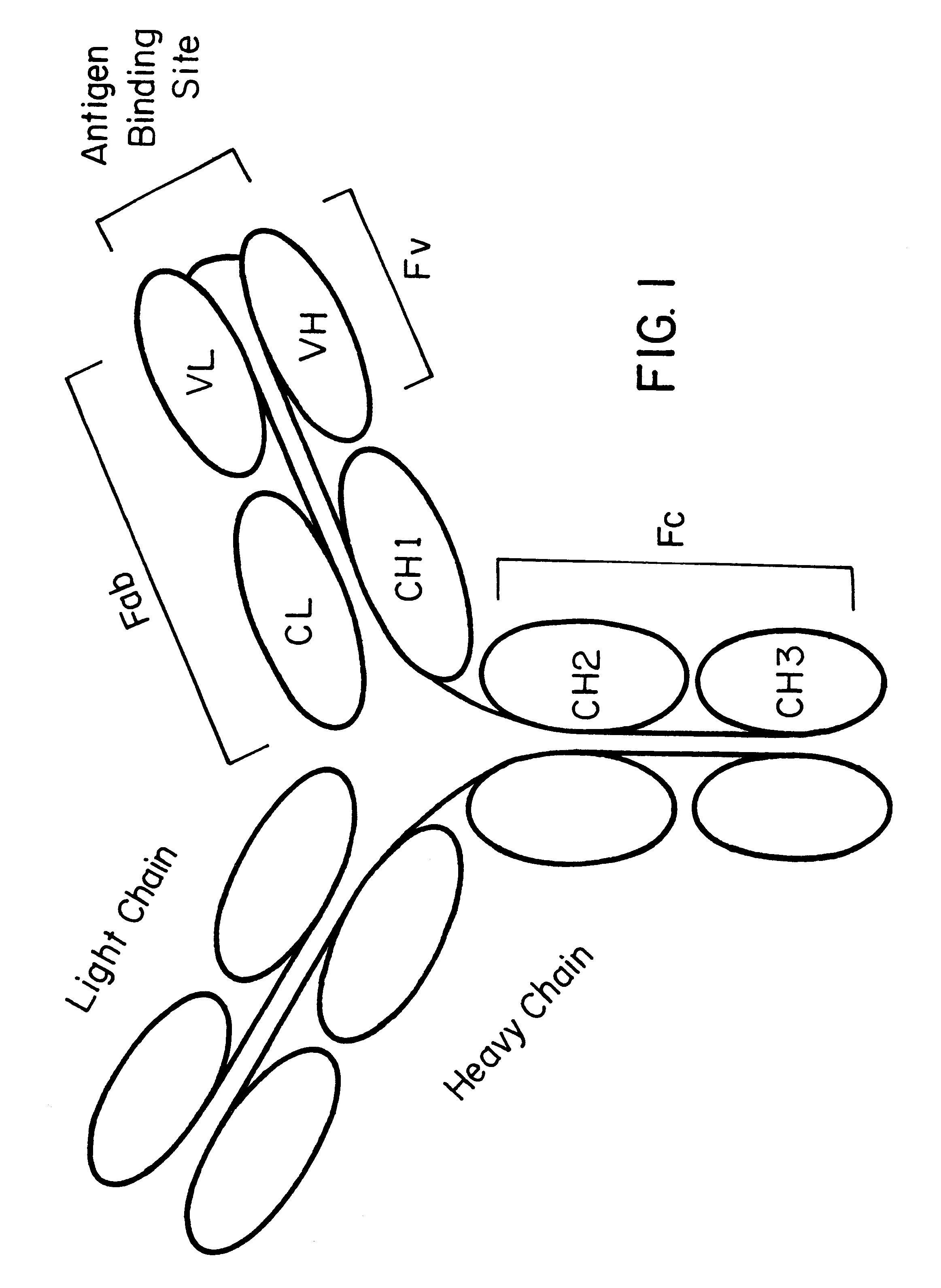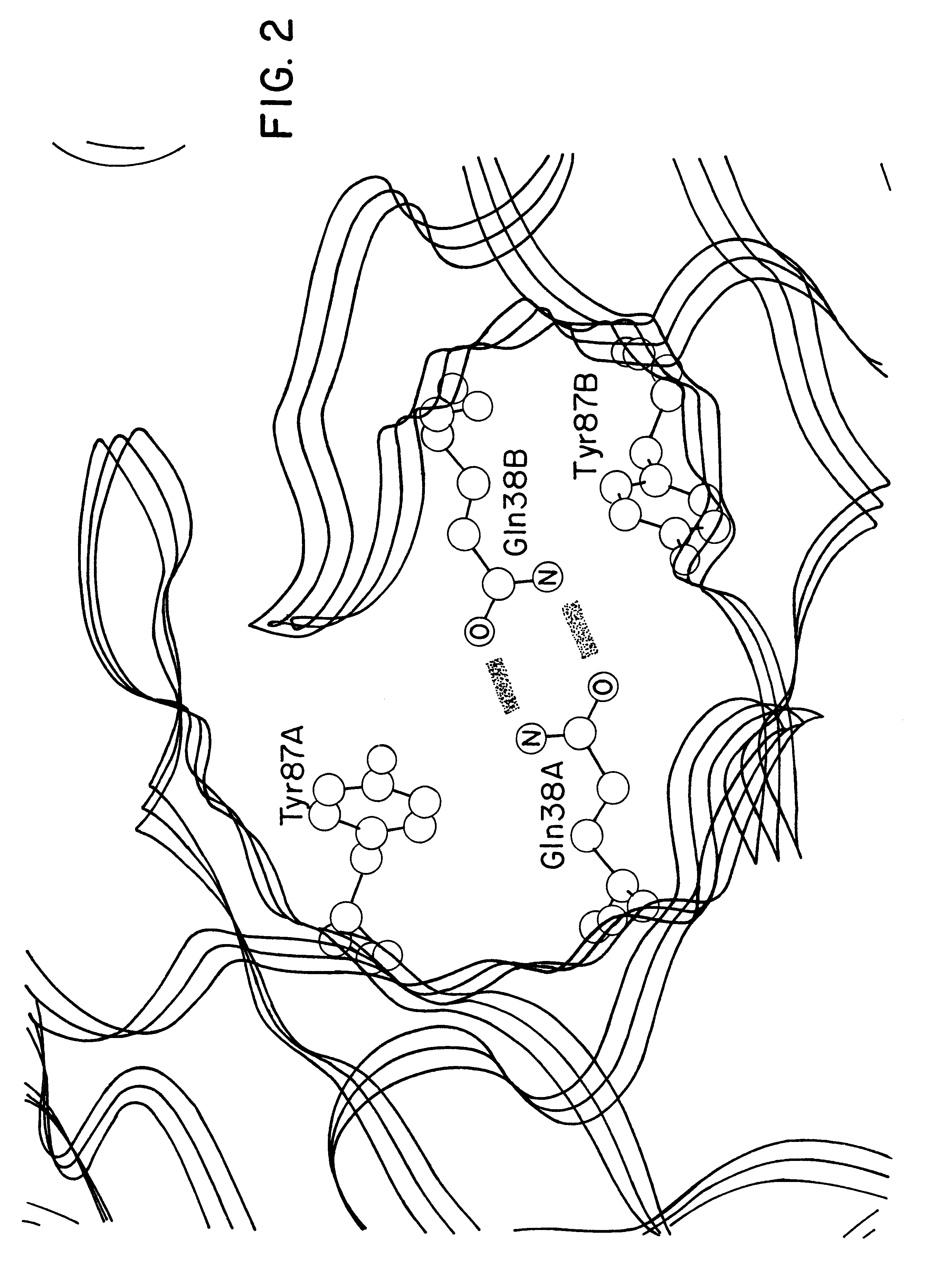Method for altering antibody light chain interactions
a light chain interaction and antibody technology, applied in the field of antibody light chain interaction alteration, can solve the problems of difficult to obtain relevant light chain protein from patient serum or urine in quantities sufficient for analysis, affect organ function, and affect the ability to racterize the chemical anctphysical properties of amyloid-associated immunoglobulii light chains, so as to improve the yield of recombinant fv, increase the yield of antigen binding fragment and variable domain fragnent assemblies, and alter the free energy requirements of dim
- Summary
- Abstract
- Description
- Claims
- Application Information
AI Technical Summary
Benefits of technology
Problems solved by technology
Method used
Image
Examples
examples 1-3
With reference to FIGS. 4-6, respectively, the interaction of the arginine (R) and aspartic acid (D) variants shows most dramatically the utility of the inventive methods, provides dramatic evidence of promoting favored heterologous dimerizations, and demonstrates the utility of such light chains as part of a panel to characterize fibril formation. At all concentrations evaluated, the mixture of D and R variants eluted earlier than monomeric samples of either D or R, at the same total concentration.
example 4
With reference to FIG. 7, aspartic acid (D) and lysine (K) variants of the present invention were interacted one with the other, then analyzed in a manner analogous to that described above. At the concentration shown, a mixture of D and K--heterologous dimerization--eluted earlier than the monomeric samples of either D or K, at the same total concentration.
example 5
Preparation and Isolation of the Nucleic Acid Sequence Encoding for Each Variant Kappa-4 Light Chain
A. Origin of pkIVlen004 Template Plasmid.
The template nucleic acid sequence from which the variant kappa-4 light chains were constructed was pkIVlen004, a plasmid which encodes the V-domain sequence of the human kappa-4 light chain Len. The amino acid sequence of light chain Len was published in 1974 (See Schneider and Hilschmann, The Primary Structure of a Monoclonal Immunoglobulin L-chain of .kappa.-type, subgroup IV (Bence-Jones protein Len): A New Subgroup of the .kappa.-type L-chain. Hoppe-Seyler's Z. Physiol. Chem. 355:1164-1168, 1974). More recently, the protein was resequenced, and amino acids at all positions were confirmed with the exception of position 9, where an Asp was found instead of the Asn previously reported.
The Len sequence contains a single amino acid difference from the germline-encoded sequence of the human kappa-4 V-region exon (Klobeck et al, Subgroup IV of Hu...
PUM
| Property | Measurement | Unit |
|---|---|---|
| molecular weight | aaaaa | aaaaa |
| flow rate | aaaaa | aaaaa |
| concentrations | aaaaa | aaaaa |
Abstract
Description
Claims
Application Information
 Login to View More
Login to View More - R&D
- Intellectual Property
- Life Sciences
- Materials
- Tech Scout
- Unparalleled Data Quality
- Higher Quality Content
- 60% Fewer Hallucinations
Browse by: Latest US Patents, China's latest patents, Technical Efficacy Thesaurus, Application Domain, Technology Topic, Popular Technical Reports.
© 2025 PatSnap. All rights reserved.Legal|Privacy policy|Modern Slavery Act Transparency Statement|Sitemap|About US| Contact US: help@patsnap.com



